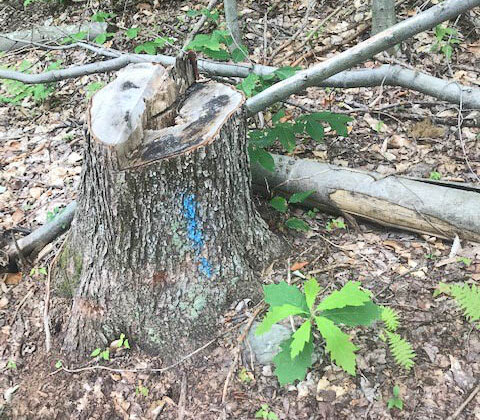Celebrate nuance — not bumper-sticker forest management
On a recent episode of the On Being podcast, journalist Amanda Ripley was quoted as saying: “Real life is not a bumper sticker.”
I was struck by how true this is for forests and for forest management. As much as we would like to believe that taking care of forests is simple, in truth it is nuanced and complex and often unintuitive. Celebrating nuance means having the courage to go beyond simple narratives and polarities, to ask tough questions about what it means to care for forests at this moment in time.
One example of where nuance is often lacking is in the discussion of mycorrhizal networks — sometimes called “The Wood Wide Web.” Through the research of Susan Simard and others, it has been shown that these underground fungal networks can connect trees’ root systems, facilitating resource-sharing, communication and a number of other emergent and adaptive properties.
This has led some to anthropomorphize trees — thinking of them as people, and to mythologize forests — thinking of them as utopias. When we do this, we misunderstand the true nature of forests: that mycorrhizal networks are one piece of dynamic and imperfect communities which are defined by resilience, which celebrate death and change, and which need our help. Taking care of forests means having the courage to recognize that they are nothing like us, that it is more powerful to see them as they are than to weave comfortable and convenient narratives around them.

A red oak seedling sprouting next to a red maple stump.
Another discussion that is often missing nuance is the discourse around old growth forests. Old growth forests are amazing; they support biodiversity, store lots of carbon and provide an array of other benefits to forest ecology and to ourselves.
Old growth forests are exceedingly rare in Vermont, and there is broad consensus in our conservation community that we need to both protect existing old growth forests and to leave some forests unmanaged to develop into old growth on their own. Where this discussion gets derailed is when the importance of old growth is taken to mean that forest management is bad, and that the answer to all of our problems is to leave forests alone.
Old growth forests are not valuable just because they are old. They are valuable because of the characteristics that they have; things like dead wood, canopy gaps, trees of different sizes and ages and old trees, each of which provides unique habitats and properties.
Nearly all of Vermont’s forests are young, many having regrown from pastures within the last 60-100 years. Most are missing these attributes and developing them naturally may take centuries. In a climate crisis and a biodiversity crisis, we need forests with these characteristics now — we cannot afford to wait.
To this end, forest management can be a vital tool, helping create many of the attributes of old growth in just decades. We also need to acknowledge that our forests face an unprecedented array of threats and stressors and are moving into an uncertain future. As a result, many of our forests may never become old growth on their own. As they navigate climate change, non-native invasive plants, pests and pathogens, forest fragmentation, deforestation, deer overabundance and more, inaction may actually be an expression of negligence. If we hope to protect forests’ function, their biodiversity, and their ecology, we will need to manage them.
Another topic which often lacks nuance is forest carbon. While, in theory, unmanaged forests store more carbon than managed forests, a forest’s ability to sequester and store carbon in the long term is a function of its holistic health, its resilience and its adaptability. What we need is resilient carbon, carbon which is stored in diverse, multi-generational, healthy forests. Managing forests, even when it causes some carbon to be released in the short term, can help forests respond to legacies, threats and stressors, build resilience and adapt to climate change, thus safeguarding their ability to store carbon in the future.
What does it mean to love a forest? Celebrating nuance means having the courage to wade in uncertain waters, to recognize that what forests require from us in this moment is often complex and unintuitive, challenging and strange. Forests, and what it means to take care of them, will never be as simple as a bumper sticker, but that’s what makes them beautiful.
(Ethan Tapper is the Chittenden County Forester for the Vermont Department of Forests, Parks and Recreation. See what he’s been up to, check out his YouTube channel, sign up for his eNews and read articles he’s written here.)

